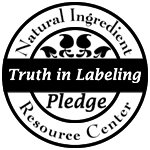The article excerpted below highlights three worrisome ingredients that dominated the headlines in 2008 but remember it’s not just one product or one ingredient. That’s a great start but many – MOST – drug or grocery store products contain all of the ingredients below – and more…Read the article. Read labels. Make a safer choice.
If you would like to read more please visit www.safecosmetics.org
-Samantha
Phthalates
The use of a number of members of this family as plasticizers and perfume fixatives has attracted criticism this year, rounding off with the National Research Council’s call for more research last week.
Earlier in the spring, researchers at the University of Washington suggested there was a link between the presence of the phthalates MEP, MMP and MiBP in the urine of infants and the use of baby care products.
In the summer, questions focused on another angle: the effect of phthalates on the environment.
In August, the Environmental Protection Agency announced it would be expanding its fish tissues pilot study in order to determine the effects of both personal care and pharmaceutical products on the waterways.
The National Research Council has been the most recent to follow up the issue, recommending that research takes into account the cumulative effect that these compounds, and their relatives with similar properties, may have on the body.
As the ingredients are found in a disparate range of products, from cosmetics to building materials, the NRC has advised the EPA to look into the effects of widespread exposure.
Parabens
Used as preservatives, parabens have received significant criticism of late in the European arena, particularly in France.
A campaign from a French health association focusing on the ‘toxic cocktail’ of baby cosmetics distributed in maternity wards led to calls from the health minister for further research and even a label marking certain products as unsafe for pregnant women and young children.
Triclosan
Criticism of the use of this antimicrobial ingredient in cosmetics and personal care products has come from both sides of the Atlantic this year.
In July, a number of public health and environment groups banded together to lobby against all non-medical uses of triclosan and triclocarbon.
The lobby groups claimed scientific studies have linked the chemical and its degradates to endocrine system disruption, cancer and increased dermal sensitization in addition to noting its ability to persist in aquatic environments.
Industry again supported the use of this ingredient, stating there is no conclusive evidence to suggest it is harmful to humans as well as pointing out that it can play an invaluable role in protecting against potentially pathogenic organisms.
In Europe, in response to research suggesting the ingredient can be toxic to laboratory rats, Ciba argues that the levels used in personal care products are much smaller than those used in the study.
Even the cumulative effect of using multiple triclosan-containing products as part of a beauty regime will lead to blood triclosan levels 200 – 300 times smaller than those shown to have an effect in the animal study.
Source: "Triclosan, phthalates and parabens repeatedly criticised in 2008" by Katie Bird,
22-Dec-2008. www.cosmeticsdesign.com









